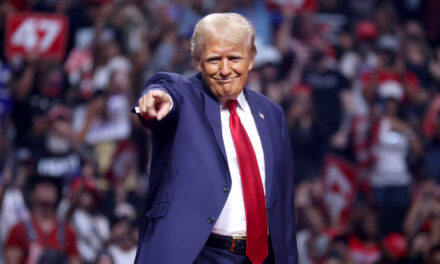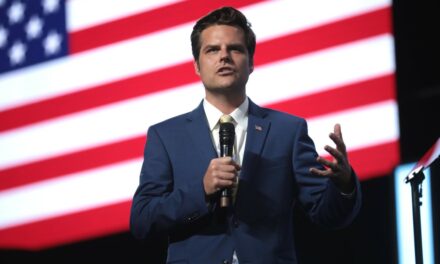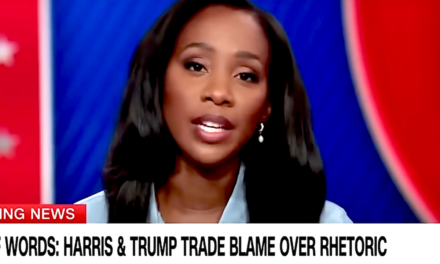We support our Publishers and Content Creators. You can view this story on their website by CLICKING HERE.
A U.N. agency’s redefinition of “peace” and “violence” will do the opposite of its mandate of promoting international collaboration through education, science, and culture. The United Nations Educational, Scientific and Cultural Organization (UNESCO), which the U.S. rejoined in 2023 after President Donald Trump pulled the country out in 2018, has instead found an underhanded way to subvert Western values and culture by pushing transgenderism, climate change alarmism, and other misguided beliefs on American students through the implementation of its recent Peace Education report.
As a member state of UNESCO, the United States agrees to taking steps (legislative or other) which may be required to conform U.S. education standards to the peace education recommendations adopted in the report; recommendations that are actually a political agenda in disguise, designed to affect the moral ideals of impressionable American youth and — as they grow up — the country’s culture-producing sectors they eventually go into. It will influence their values, attitudes, and beliefs so that they’re critical of the founding ideals of the United States that guarantee our national sovereignty and promote individuality. It will also indoctrinate them into a collectivist mindset that believes global governance by unelected bodies such as the United Nations and radical progressive policies like a global Green New Deal are the means to peace.
What is peace? Many would define it as the absence of war or armed conflict. According to UNESCO, by that definition, “only 17% of countries were engaged in armed conflict in 2019.” However, UNESCO would like to redefine and broaden the scope of what peace and global security actually entail in order to infuse all of education with their Maoist brainwashing program under the guise of “building lasting peace.”
The Redefinition of ‘Peace’ and ‘Violence’
In UNESCO’s report, “Peace Education in the 21st Century: An essential strategy for building lasting peace,” peace is said to be “not just the absence of war and direct violence (“negative peace”). It also involves resolving the underlying causes of conflict that can lead to violence and war (“positive peace”). However, the conditions for both negative and positive peace have been defined by UNESCO to suggest that they are all-encompassing and include what they call “unconventional” threats to peace, such as “climate change, large scale human migration, social injustice, the scarcity of resources (food, water, biodiversity, oil, gas, etc.) and pandemics.”
UNESCO wants students to view “unconventional threats” such as climate change as problematic to peace “on par with nuclear proliferation.” Peace, according to UNESCO, also requires the “presence of factors that make society less violent, unjust and inequal.” It is this broadened definition of what promotes peace and prevents violence that will enable peace education to allow for a variety of interventions and topics that go far beyond the scope of dealing with and preventing actual armed conflict to include subjects such as critical race, queer, and environmental theories.
The definition of what UNESCO considers “violence” has also been expanded. It includes “hidden” and more “indirect forms” of structural and institutional forms of violence encoded into “norms, customs and laws” of certain systems that perpetuate inequities, leading to poverty, conflict, and war. By their definition of violence, for example, students could be taught through peace education that America’s free enterprise economic system of capitalism (because of its unequal outcomes), and not allowing men to participate in women’s sports (because of the lack of acceptance that men who identify as transgender are actually women upholds inequitable societal gender norms) are both barriers to peace.
The real goal of peace education in this context will be to get students to develop a critical consciousness through a method called systems thinking — to believe the way certain systems of society are built to benefit some and disadvantage others (root causes), to know their position in that structure (oppressor or oppressed), and to help them understand their role (i.e. becoming an ally/activist) in dismantling those social structures through which people are dominated and oppressed. As the report claims, “Indirect forms of violence (or structural violence) deny people certain basic rights or prevent them from accessing resources equitably.”
Indoctrination through Peace Education
In “New Understandings of Education’s Contributions to Peace,” one of the three technical notes used to create UNESCO’s Peace Education report, it is proclaimed that resolving the underlying causes of conflict that can lead to violence and war (“positive peace”) includes putting into place a holistic (Whole Child) learning model and certain transformative educational frameworks that teach subject matter which UNESCO believes will promote in students the “knowledge, skills, attitudes, values, and behaviors required to change from the personal to the ecological.”
In other words, students will need to learn in such a way as to engineer in them a global mindset that will turn them into advocates for the completion of the United Nations Sustainable Development Goal (SDG) 2030 agenda, which UNESCO believes will help provide the conditions for peace. Unfortunately, while many of the goals sound noble (zero hunger, no poverty, quality education, clean water, etc.), it could be argued that some are being pursued through the globalization and domination of all systems of civilization in the name of global equity.
The global equity that’s touted as a condition for peace, though, would require a global redistribution of wealth and resources (i.e. global communism) through a global system of governance (e.g. by the United Nations, or artificial intelligence) to make that a reality. Students will have to be convinced through peace education that this method of governance is preferable to nation states having their own sovereignty and making decisions on how to govern themselves and their resources at a local level, and that solutions that promote global solidarity and a shared responsibility (accountability) to sustainable development are the ways to foster peace.
Social emotional learning (SEL) — an educational intervention that plays on students’ innate desire to show empathy and take other people’s perspectives to manipulate them into a global worldview — is listed as just one of the many “holistic educational agendas and pedagogies” that can be used “in the development of the whole person” in the pursuit of peace. UNESCO has consistently mentioned SEL as a necessary tool in its achievement of the UN sustainable development goals. That’s because SEL uses a highly criticized psychological method called sensitivity training to coerce students into thinking that the common good of all should be prioritized over the welfare of the individual by promoting socialist policies.
Several other educational practices, learning approaches, and frameworks listed in the report as vital to providing peace education will demand the integration of pedagogical agendas that groups such as the parent organization Moms for Liberty have been warning are indoctrinating students by radicalizing them against America and the Western values. It will incorporate topics and modalities such as these:
- Comprehensive Sexuality Education (CSE) will be an essential tool to get students to understand the “patriarchal institutions that threaten the lives of women, children and the LGBTQ+ community.” CSE will also teach students as young as 5 about sexual stimulation and pleasure, with the reasoning that teaching kids about sexuality as young as possible will help them avoid eventual unwanted early pregnancies that leads to conditions of poverty, which UNESCO says can then lead to violence and war.
- Global Citizenship Education will help students recognize their role and responsibility to the rest of the planet as a “global citizen,” not an American citizen.
- Education for Sustainable Development (ESD) gets students to view climate change as an existential threat to peace so they will view “net zero” policies favorably. ESD will encourage individual and collective behavior change (e.g. not eating meat) to accomplish the sustainability goals.
- Digital Citizenship will teach free speech regulation on the internet (because uncensored speech can be a tool of “indirect violence”).
- Culturally Responsive Teaching and Restorative Justice will require learning and conflict resolution at schools to happen through a Critical Race Theory lens to promote peace.
- (Action) Civics Education will recommend the idea that the U.S. could have more peace if it moved away from being a constitutional republic to a direct democracy (mob rule/popular vote only) and do away with the Electoral College. As a part of promoting civics through peace education, students will be spurred on to get involved with marches, protests, and advocacy groups that further this agenda.
- Education for Health and Well-Being — because it addresses the broader physical, mental, and emotional health and well-being needs of adolescents — will necessitate turning schools into mini hospitals called community schools. Community schools will provide medical services and interventions to youth — including “gender-transformative comprehensive sexuality education” that deals with their Sexual and Reproductive Health (SRH) — via the Centers for Disease Control’s WSCC (Whole School, Whole Community, Whole Child) model and the Whole Child Design Principles. The argument will be made that the school ensuring the basic needs of the student are met (socialist state-style) promotes learning and prevents conditions for violence. Eventually, it will also be argued — as is already happening in school-based health clinics in states such as California and Minnesota — that it is the student’s “right” to access those services (e.g. vaccines, puberty blockers, morning after pills, etc.) without the consent of their parents to do so.
Peace Education Will Be a Whole-of-Society Endeavor
UNESCO makes clear in its technical note that non-state actors are key to providing educational interventions that support peace. Non-governmental actors include, but are not limited to: private schools, research bodies, civil society organizations, networks of schools and associations (such as the National Education Association), philanthropic organizations, corporations providing education (and non-education related) goods and services, media, faith organizations, museums, libraries, and after and out-of-school time entities. This will likely be exacted through the Whole Child Design Principles that will ensure the entire community — based on the concept that learning happens “anytime, anywhere”— will be forced to provide a learning environment for students that reinforces this collectivist worldview.
In order to be prepared to do this, adults in the community providing any services attached to education (e.g. at your local Boys and Girls Club or 4-H program) through the Whole School, Whole Community, Whole Child’s public-private partnerships will have to be re-educated through adult education to adopt this mindset too.
Because terms such as “peace education” and “whole child” sound inconspicuous, unsuspecting legislators and community council members could easily adopt language that cements this anti-American, Marxist agenda of UNESCO’s into law and policy. They should instead be wary of peace education and any initiative that redefines peace in this way.
Additionally, in his second term of office, President-elect Trump should once again remove the U.S. from UNESCO to ensure that teaching students the value of upholding national sovereignty plays an essential role in American education.
Lisa Logan is the host of the YouTube Channel Parents of Patriots and author of the Substack Education Manifesto. Find her on X at @iamlisalogan.

 Conservative
Conservative  Search
Search Trending
Trending Current News
Current News 





